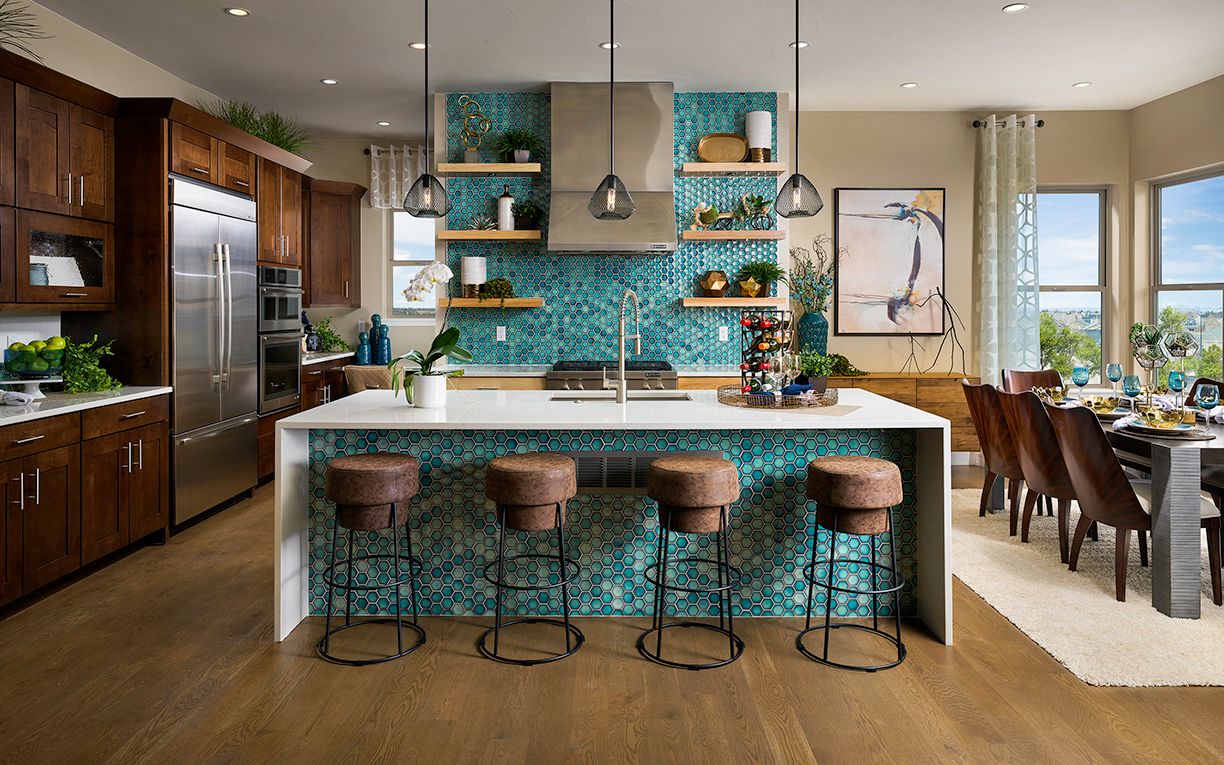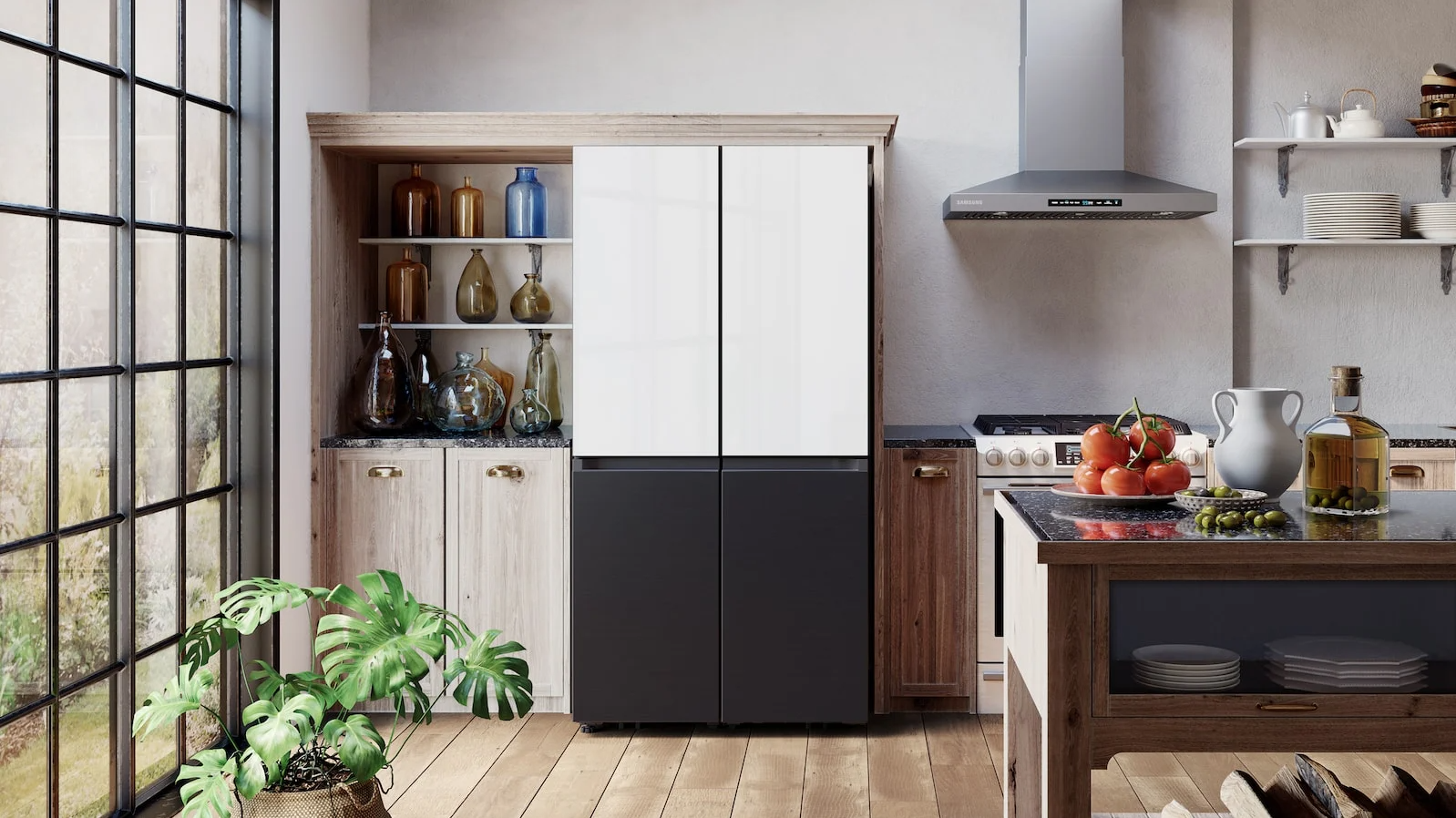Architecture
Kitchens Stir the Pot: Post-Covid Consumer Desires Revealed
The New Home Trends Institute, the new consumer-insights unit of John Burns Real Estate Consulting, shares what people want in 2021 kitchens in a TBD exclusive.

Credit: Photography by Eric Lucero, designer EllisDesign, image courtesy of Berkeley Homes
If predicting what post-pandemic consumers want were a betting sport, the kitchen would be its bookie.
With prognosticator season awash with A-plus-B-equals-C logic applied to the unpredictable and often irrational world of what consumers want, what seems sensibly repeatable has finally met some data.
The John Burns Real Estate Consulting's New Home Trends Institute (NHTI) report on consumer demands and desires for kitchens in 2021, based on 1,140 interviews with U.S. homeowners with incomes of at least $50,000, and leaning on Houzz's Kitchen Study based on surveys 0f 2,014 homeowners who have recently, are currently or are planning home renovations, gives a clear picture of where kitchen design needs to focus right now and the products most affected.
The implications of its findings for builders and suppliers range from an immediate need for collaboration between the two, a rethink of design and space, and a realization of the unique values and wants of different age demographics. Spoiler alert: the kids are alright, but they're different.
NHTI says consumers want a transcendant kitchen all grown up, transforming from utilitarian duckling into a graceful and stylish swan, the central hub of family life and entertaining in a clutter-free world – sown from re-imagined spaces and sustained on easy to clean surfaces.
Conceal and Reveal
Open cabinets are getting doors and shutting them, as if to be seen only when needed and at all other times, blending with and contributing to a personalized look. NHTI polling showed that 75% of purchasers of new houses under 2,000 square-feet want all upper cabinets to have solid doors, and that sentiment holds at 67% for homes from 2,000-to-2,999 square-feet and 59% for homes over 3,000 square-feet. The one caveat, NHTI notes, are young families, "the only life stage group where the majority would like to include some open shelving. Contrastingly, 82% of Mature Singles and Couples would be opposed to any open shelving."
As the NHTI report further notes, kitchens will have "varied colors and textures that look like they have been carefully curated over time," replacing any desire for "overly 'matchy' kitchens that appear cookie cutter. This curation allows for multiple cabinet doors or cabinet concepts in one kitchen, unlike a typical kitchen. This will grant more flexibility for cabinet door sourcing, which could be a relief for suppliers."
Appliances will be called on to keep the design narrative flowing, or more accurately, to stay out of its way. This is the year, NHTI says, when "panel-ready appliances will become mainstream. Whirlpool predicts that the refrigerator, dishwasher, and even cooking products will become fully paneled and hidden." And the time to start coordinating with suppliers is right now.

Consumers also revealed an obsessive drive to banish clutter and its impact on the overall sensation in the room, leading to creative optimizations of every speck of space. Larder cupboards and walk-in pantries will thrive this year, but the de-clutter craze also has led to one of the more intriguing trends in kitchen design: the back or prep kitchen, where caterers can cook and serve during parties and get-togethers or dinner dishes can be stacked out of sight before cleaning, letting family night at home or a gathering of friends may proceed uninterrupted and the mood unintruded.

Before you write the back kitchen off as a perk exclusively for larger, high end new homes, NHTI notes that Level 1 by Taylor Morrison in Costa Mesa, CA, includes a prep kitchen tucked behind a red-trimmed glass barn door that provides storage, a second oven, counter space and two windows.
End Trend
NHTI issued a "Stop" command on one aspect of kitchen design that seemed to have become a staple over the past several years: the kitchen desk space. "Despite increased work from home, the two “desk” options (home management and work/homework) are only considered by 40%-43% of homeowners, less than those who consider space to feed their pets," NHTI writes. "Given increased automatic/electronic bill paying, meal planning/grocery lists on our phones, and the increased need for a dedicated work set-up elsewhere in the home, we wonder if these kitchen workstations are less desired than they were before, just at the same time as more homes are including them."
The exception is with young families, the only demographic category with even a slight majority (51%) who use the kitchen desk for work or homework half of the time. By contrast, 46% of young singles and couples say they would never use a kitchen desk. In the post-pandemic house, work-at-home will need to find another home within the house, which should give builders and architects some pause.
On the renovation front, young families are the most likely to undertake a kitchen remodeling, and that, NHTI notes, is good news: "This is the group that uses the kitchen for the most tasks, and is also the most willing to swap out more of their products simply because they do not like how they look."
What's Old Is New
In other revelations, the NHTI report notes the following prospects for several product manufacturer categories:
Countertops, cabinetry, and drawer pulls/handles are the most often replaced for purely aesthetic reasons; appliances the least.
Easy-to-clean and low-splash are the largest sink improvement opportunities.
Dishwashers are the most frustrating kitchen appliance. Expect large demand for silent dishwashers.
Refrigerators are homeowners’ favorite appliance, especially when features include flexibility, smart features, warnings and separated compartments.
Widespread appliance “placement” complaints verify the importance of cross-industry collaboration in home design. The perfect appliance (particularly dishwashers) can still be a major point of frustration if it is placed into the wrong space.
Stainless steel is important enough to homeowners that it is included in their description of their favorite appliance features.
Now, armed with data-backed prognostications, go in your kitchen, ask Alexa to call your bookie, and place your bets.
Join the conversation
MORE IN Architecture
Design-Estimating Disconnects Cost Builders Time And Margin
Former builder-operators Brandon Pearson and Marcus Gonzalez share what’s broken—and how connected teams can win now and in 2030.
How Missing Middle Housing Wins Approval And Works
Architect and planner Dan Parolek coined the term “missing middle housing.” His firm’s projects prove that thoughtful design, political navigation, and local momentum can overcome entrenched zoning resistance.
Faster Builds, Better Margins: The ROI On Right-The-1st-Time Velocity
Inside the digital transformation of homebuilding: How integrated teams, shared data, and AI are turning velocity into a high-stakes profit advantage.